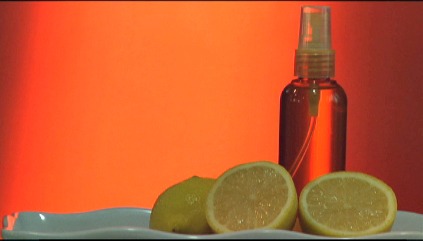Going natural with DIY insect repellents instead of toxic insecticides
The rains may drive the heat away from homes, but they also bring in the pests—which in turn bring in sicknesses like dengue. Cats and dogs may be able to get rid of bigger pests such as rats and the occasional frog, but smaller ones—ants, flies, mosquitoes, and cockroaches—are a different story altogether.
A common recourse is to use insecticides—but commercially available insecticides also have chemicals that may be injurious to the health. What's more, the Food and Drug Administration is on the lookout for some 16 contraband insecticides that do not list the full chemical ingredients on their labels.
Not having gone through the FDA's reviewing process as well as failing to list the complete compounds that went into their respective mixes, these insecticides, some smuggled into the Philippines and most made in China, are considered hazardous to one's health.
They have been pulled from shelves and confiscated, yet it was recently discovered that some units are still being sold in certain shops in Divisoria, among other places in Metro Manila. The aerosols cost between P65-P80 while the coils (or katol) cost P20.
“Ibig sabihin lang niyan ay una, hindi pa nakaka-abot sa mga manininda o sadyang hindi talaga nila masyadong pinahahalagaan itong klaseng biso,” said Thony Dizon, project coordinator of the Ecowaste Coalition.
For many people worried about the health effects of commercially prepared insecticides, especially contraband ones, going the natural route is becoming a viable alternative.
Natural house traps and repellents

Cockroaches can be driven out by beating out the natural oils and scents from pandan and tanglad plants and then placing the stalks inside dark, dusty cabinets. These may also be trapped by mixing oil with any softdrink.
If ants are the problem, one need only choose from three remedies: salt or crushed laurel leaves are effective against ants when placed all along their marching path and within the hole they entered from. One can also spray them with water mixed with chili.
Flies cannot stand the smell of citrus fruit juices like calamansi and orange—simply spread out the extract on a clean cloth.
Rats, meanwhile, won't stand a chance against siling labuyo and mint leaves.
The eco group also advised planting basil, marigold and malvarosa flowers, and tanglad around the house.
But don't think that only these herbs, fruits, vegetables, and flowers are the only solutions, especially if you find them unavailable at the market. An assortment of natural insect repellents can also be made out of lemon slices, an array of essential oils, citronella, and lemongrass. One need only pick what best suits one's skin and nostrils.
A video on Good News showcases even more do-it-yourself insect repellents, featuring even more fruits, vegetables, herbs, and oils.
Indeed, there are many ways to protect yourself and your family from insect-borne diseases and the effects of chemicals in insecticides. The right natural ingredients can be easily found in the grocery—or maybe even in your garden. — BM, GMA News




